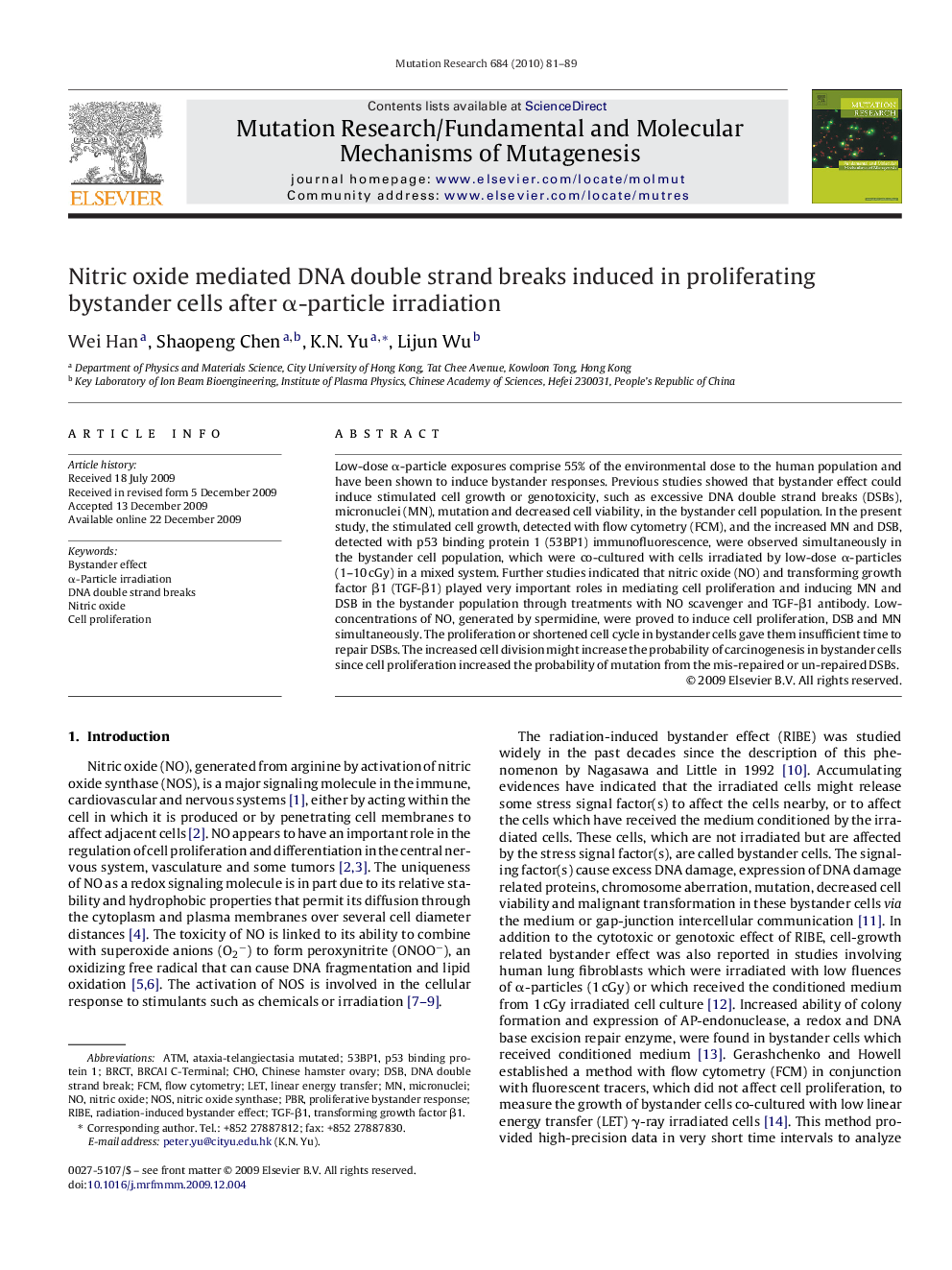| Article ID | Journal | Published Year | Pages | File Type |
|---|---|---|---|---|
| 2146882 | Mutation Research/Fundamental and Molecular Mechanisms of Mutagenesis | 2010 | 9 Pages |
Low-dose α-particle exposures comprise 55% of the environmental dose to the human population and have been shown to induce bystander responses. Previous studies showed that bystander effect could induce stimulated cell growth or genotoxicity, such as excessive DNA double strand breaks (DSBs), micronuclei (MN), mutation and decreased cell viability, in the bystander cell population. In the present study, the stimulated cell growth, detected with flow cytometry (FCM), and the increased MN and DSB, detected with p53 binding protein 1 (53BP1) immunofluorescence, were observed simultaneously in the bystander cell population, which were co-cultured with cells irradiated by low-dose α-particles (1–10 cGy) in a mixed system. Further studies indicated that nitric oxide (NO) and transforming growth factor β1 (TGF-β1) played very important roles in mediating cell proliferation and inducing MN and DSB in the bystander population through treatments with NO scavenger and TGF-β1 antibody. Low-concentrations of NO, generated by spermidine, were proved to induce cell proliferation, DSB and MN simultaneously. The proliferation or shortened cell cycle in bystander cells gave them insufficient time to repair DSBs. The increased cell division might increase the probability of carcinogenesis in bystander cells since cell proliferation increased the probability of mutation from the mis-repaired or un-repaired DSBs.
